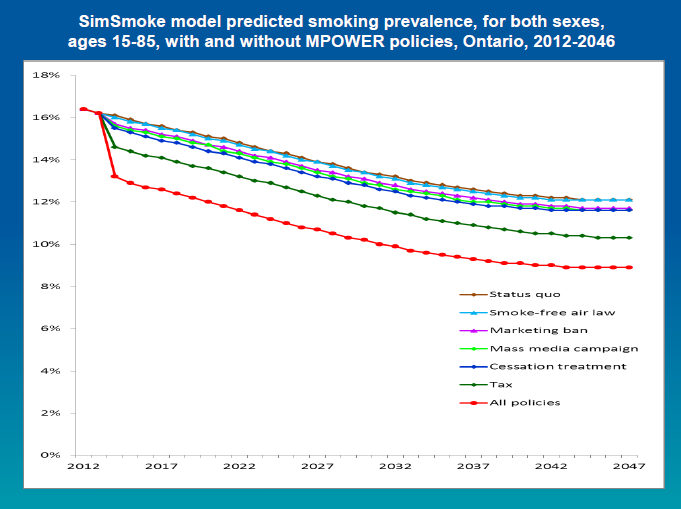
Welcome back, fellow public health enthusiasts! Last time you heard from me, I told you about Canada’s deadly addiction to smoking and the “Endgame” goal: A national smoking rate of under 5% by 2035. What I didn’t tell you is what we have to do to get there. The good news is that it’s definitely possible and that when we do, it will save tens of thousands of lives and billions of dollars a year. The bad news: At first, not everyone is going to like it. Nuh uh. They won’t.
I’ve worked in tobacco control for over a decade and whenever there is a change on a system level to lower the smoking rate—no matter what it is—I have very consistently noticed one thing. There is almost always a public outcry that it’s “TOO FAR!” We’re living in a “NANNY STATE!” and what’s being done should be stopped and we should “FOCUS ON EDUCATION!” Here’s the problem: we have been focusing on education all along, that’s why everyone knows smoking is bad for them. “Too far” isn’t nearly far enough and the current “nanny state” measures don't even come close to lowering the smoking rate to where it needs to be. We are barely chipping away at it. People continue to smoke and die horrible and needless deaths.
Nicotine is one of the most addictive substances on the planet. Even though most smokers want to quit, quitting can be extremely difficult and it usually takes more than one try. In fact, by some studies, it is estimated that it takes an average of 30 attempts before quitting for good. And for all the people who quit, despite every bad thing we know to be true about smoking, there are new people who start every day. In the tobacco industry’s own words, these are the “replacement smokers.” Big Tobacco needs new customers to replace the ones who quit or die.
Okay, I know I’m getting a little doom and gloom here but it’s to illustrate a point. There is a way to do this, but it must be known that the status quo is not enough. And to be honest, even implementing a whole list of recommended policies is not going to get us to 5% by 2035. Just take a look at this chart where a computer program predicts the smoking prevalence with and without implementing various tobacco control measures. (Yeah, there’s an app for that.)

As you can see, even with all those policies implemented, we’re only going to get to a rate of about 10% by 2035. In order to effectively reduce the smoking rate, we need to take new, bold and innovative measures. There is strong evidence that there are steps that can be taken that can get us to the Endgame by 2035. Some are already underway, like implementing plain and standardized packaging to commercial tobacco products. We’re reducing exposure to modeled behaviour by banning smoking on post-secondary campuses and working to put an end to onscreen smoking in youth-rated movies. Raising taxes on commercial tobacco products is one of the most effective ways to lower the smoking rate (despite what the tobacco industry would tell you about its effect on contraband). It is a fact that price is linked to quitting. Immediately raising taxes in every province to the highest level in Canada, continuing to increase price and then re-investing the revenue into smoking interventions would make an enormous difference.
Finally, we need a structure where there is help for those who want to quit. A “no wrong door” approach where the healthy choice is also the easy choice. Health care provider standard of care must include quit support in all clinical settings where cessation aids are available without cost for all people who need them. This requires system-wide changes on many levels. It’s not simple, but it is possible.
Imagine a Canada where the smoking epidemic is a thing of the past. A Canada where our most vulnerable people are not the ones shouldering the greatest burden of disease. Our country’s lofty goal is within our reach, as long as we’re willing to make the changes required to get there.
If you want to know more about the smoking endgame, the Northwest Tobacco Control Area Network is hosting a Knowledge Exchange Forum - Endgame: Our Journey to a Smoke-Free Future. To learn more about the forum and how to register, visit Tobacco Control Knowledge Exchange Forum or contact Kari Chiappetta, Forum Coordinator, at (807) 621-6225 or kcconsulting@shaw.ca
______________________________________________________________________________________
| Recommended for You | ||
|---|---|---|

|

|

|

